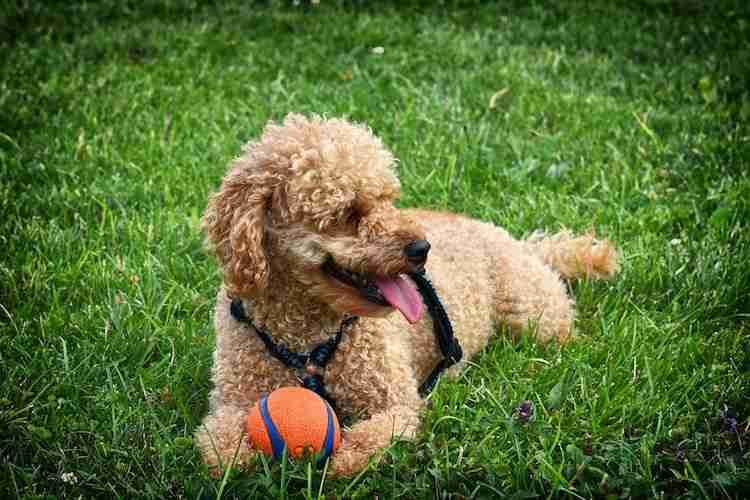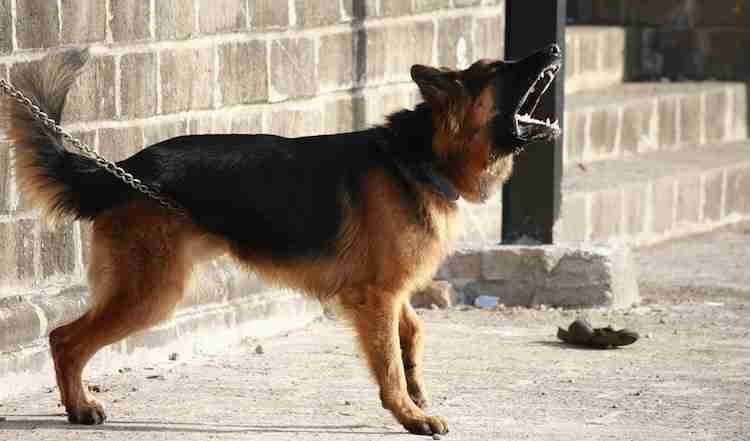The word in itself is a feeling that fills human with unconditional love. The connection between the human race and the dogs is way too old. Dogs have been loyal human companions for a very long time now, and humans also love their pooch more than anything else. That is why we want to help you understand separation anxiety in dogs.
Having dogs around not only makes the world a better place, but they also change the lives of their human friend in a significant way, of course, in a good way.
Now, who does not like coming back home to see that happily wagging tail and excitingly playful jump of their little ball of fur? Well, we all do. Only a proud dog parent can understand the feeling of seeing their four-legged friend excited upon entering the home after a rough day at work.
And for those who don’t own a pet, let me tell you how it feels. It is like you get rid of all your worries and that fiery feeling after spending your entire day being busy. I mean, the only sight of your dog is enough to make you feel elated.

Can pet owners treat separation anxiety?
We can’t deny the fact that owning a dog change lives for the best, but besides feeling glad to have a dog, many dog parents often complain about the fierce/destructive behavior of their pooch.
Some of the dog parents see it as a chance to teach polite house manners to their dog, failing to realize that it might be a serious concern and needs some attention.
Well, if you too fall among the list of such irritated dog parents, then do not worry. This article will guide you through and help you understand why is it that your dog starts exhibiting destructive behavior and how you can better handle it. So, without wasting any more time, let’s move directly onto the problem.
What is Separation Anxiety in Dogs?
I have seen people punishing their dog for misbehaving, or if not punishing, they continuously keep complaining about the same. Well, the very first tip I would like to give you before getting into the details of the problem is that do not punish your dog. It is of no help and will only make the situation worse.
Separation anxiety is a serious concern and needs to be attended to very carefully. When you feel stressed about the awkward behavior of your dog, it is not that he has forgotten to behave, but a sign that he might be suffering from separation anxiety in dogs.
Dog separation anxiety is a situation when your loved one cannot stand to stay alone without you. It generally occurs when a dog does not find his guardian around. Just as we humans are social animals, dogs are too.
They find it difficult to live without their pack leaders, which, generally for them, is their human friend or guardian. Thus, when they are left alone, they exhibit the feeling of stress by causing destruction, either in the house or to themselves.
Also, we always recommend for pet owners to visit a local veterinary behaviorist for a professional opinion. Now that you know about separation anxiety let’s talk about the symptoms that indicate that your dog might be suffering from the same.
Symptoms of Dog Separation Anxiety
Just when you start feeling that your dog is behaving opposite to your expectations, you might need to pay heed to why he is doing so. Understand the need to be attentive and check out if he is only exhibiting such common behavior in your absence or in your presence too.
If the destructive happens when you have left home, then they surely develop separation anxiety. But if he does the same way even in your presence, then he might need to go through the polite manners training session again. Here are a few symptoms that show that your dog is suffering from separation anxiety.
Excessive Barking or Howling
If you come back home after a long day at work and listen to your neighbor telling you that your dog has been disturbing the whole area around by aggressively dogs barking and howling, then do not feel frowned.
See it as a sign that your dog might be suffering from the problem of separation anxiety. He might be feeling anxious not to find you around, and thus, he is exhibiting the feeling of stress by dogs barking and howling.
Urinating/Defecating Indoors
No one likes coming back to a surprisingly stinky home. Well, it might happen with you that you come back to see a wet carpet or a smelly bed. Yes!! You will feel irritated. But, it might be a sign of separation anxiety in your dog.
So, if you see your dog doing his business indoors while you are not around, do not panic and take it as a sign that your dog is suffering from separation anxiety in dogs.
Pacing
You might see your dog moving in a circular motion or walking back and forth along a straight line. This is something unusual, and dogs usually do it when they are feeling anxious or stressed. This could mean that the anxiety has started to slowly increase. Although this might be more under the mild cases of separation anxiety, you should always keep an eye on them.
Destructive Chewing/Destroying Furniture
When you come back home and see the destroyed furniture, doors, or windows, or if your dog has chewed your favorite red bottom shoes, it might indicate the feeling of anxiousness in them. Try giving your dog a chew toy.
They chew on things to get rid of the feeling of anxiety. If you notice a destructive chewing behavior, there is a chance that your dog has separation anxiety, in this case, you must visit a certified applied animal behaviorist.
Digging or Escape Attempts
Dogs with separation anxiety usually try to dig through the doorways to escape. They do this out of aggression, and such attempts might also prove to be harmful to them.
They may end up hurting themselves in the form of broken teeth and nails, scraped paws, etc. So, if you notice that your puppy dog is attempting to escape, take it seriously as he might be doing out of the feeling of being anxious.
House Soiling
Another common behavioral issue that is related to severe cases of separation anxiety is house soiling. Usually, dogs learn to defecate in the outdoors, and once this pattern is broken, then you should keep an eye on your pet. Also, this can be related to other serious medical issues, so it is important to visit a Vet for a checkup. Treating house soiling can reduce anxiety.
Tips to Treat Separation Anxiety in Dogs

You now know what separation anxiety is and the symptoms to spot the problem in your dog. So, let’s see how you can help your dog to get over the issue. Here are five things you can do to prevent separation anxiety in dogs:
Give Him Independence Training
I know every dog owner likes to see their pooch following them everywhere, but you have to understand the fact that it might impose a problem on your dog when he does not find you around.
So, instead of pouring love on him for following you from room to room, provide him independence training.
This will help him understand that it is okay to spend time alone. Try leaving your dog in a room or his crate alone for some time. Start doing the same for five minutes and extend the time gradually.
This technique will help your dog stay alone without feeling anxious. Also, this will help when you are preparing to leave for a long trip without your pet.
Prefer reading: Quick tips on how to train your dog.
Keep Him Occupied
One of the best ways to keep your dog happy is keeping him occupied. Leave him with a few toys and puzzles that keep him busy. This will not only help in keeping him occupied while you are not around but will also boost his confidence when he solves the puzzles.
This way, your dog will have no time to feel stressed about your absence. Also, you can give them a bath to remove any fleas and ticks. Crate train or house training is also another way to keep them occupied. There are plenty of dog sports that you can try as well.
Get Him Tired
Consider adding this tip to your regime. Take your pooch for a walk before you get all set to leave the house. Prefer taking your dog’s backpack to make the trail more rigorous for him. Gradually increasing the time you spend playing with your pet can help you reduce the amount of anxiety on your dogs.
When you come back from a walk, your dog will feel tired, and instead of worrying over your absence, he will prefer sleeping or resting.
Seek Assistance From a Dog-Sitter or doggie daycare
You may consider seeking assistance from a dog-sitter or leaving your dog at a doggie daycare center while you leave home for work or anywhere else.
This will help your dog to stay at bay from the feeling of stress or anxiousness arising as a result of your absence. Even though your absence causes separation anxiety, the personnel on the doggie daycare center has the experience to deal with this problem. However, try to keep the amount of time as minimal as possible.
Leave Memory Cues for Your Dog
Consider leaving the clothes you have recently worn as a memory cur for your natural dog. The smell of your worn-out clothes will help your pup understand that you will be back home, and thus, he will not get stressed. This is a great practice of dealing with separation anxiety in dogs.
Purchase a Pet Feeder With A Camera
A pet feeder with an integrated camera can help you keep in touch with your dog. Just imagine seeing your dog named “Coco” through a camera all day at work. It is an awesome way of how your dog eat treats.
However, in the early stages of using the pet feeder can be confusing for them. That is why it is important for teaching your dog new things to help them improve their overall dogs behavior.
Avoid Making a Big Deal of Your Arrival/Leaving

Most of the people keep talking to their dog before leaving the house, or they come back home with their arms all open to hug their pooch. Though the pet owners see it loving, it imposes a problem on dogs when they do not find their human pal around.
So, the best you can do is not making a big deal of your coming back home or leaving the house. Try and avoid your dog while you leave the house or come back. Please do this for five minutes or a short period and then pay attention to him. Also, if you notice that your dogs suffering, try using puzzle toys or a chew toy to play with him or her.
Most dog owners have to understand that sometimes that they can be the cause of their pets anxious behavior. If you are ready to leave the house for a long period of time, remain calmly pick up your keys and leave. Don’t announce to your dog that you are leaving, and I know that it is not an easy task to ignore your dog. Also, don’t leave the radio or Tv on if you leave your dog home alone, and avoid any animal cruelty as well.
Wrapping it Up
I know, having family dogs is the best feeling ever, and being strict with him can be a little tight. But, you are doing it for his best only. So, keep the tips discussed above in mind, and even if you don’t feel like, follow them to keep your dog feeling happy. No matter what breed name your dog always deserves the best.
Your local veterinary behaviorist can provide drug therapy to reduce anxiety if your dog has chronic symptoms. Also, It is imperative that you seek professional advice if you notice these dogs anxiety symptoms or other distress behaviors.
According to the Humane Society of The United States too many escape attempts and destructive chewing behavior are a few signs to look for. Keep calm and quiet, and pick up your keys ahead to the vet for a checkup.
Has your dog freak out or feel anxious lately? If you are a dog parent and have helped your dog overcome the problem of separation anxiety in dogs, feel free to share your experience in the comment section below.
Last Updated on 16/03/2025 by Karen Snow
Hi! I’m Karen and a certified dog lover. As a freelance writer and blogger, I do my best to squeeze in some time with my dogs, learning more about the way they act and how I can make sure that they continue to stay well-cared for by yours truly.
My dogs have helped me through a lot, and this is my way of giving back to them! Besides animals, I also love to travel and cook, having explored my country’s restaurants and unique places. Follow me as I show you all the amazing tips and bits of information I learn along the way about our furry friends!
